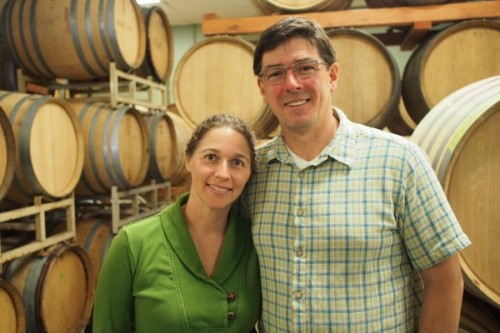
I visited Matello/Goodfellow Family Cellars last a couple of years ago (see report here), and it was great to go back on this trip to catch up with Marcus Goodfellow and Gaironn Poole. What’s changed? A few things. First, they have a kid, Fletcher, who entertained us as we tasted – he was well on the way back in July 2014. And second, there’s been a shift away from the Matello label towards the Goodfellow label, which focuses on a select bunch of dry-grown vineyards that Marcus sources from. These include the Whistling Ridge vineyard in the Ribbon Ridge AVA. With shallow marine sediment soils, this is the jewel in Goodfellow’s crown: they have exclusivity on its 14 acres, which were planted in 1990 by Richard and Patricia Alford. Richard is a WW2 veteran now aged 92 who in 2012 finally got kicked off the tractor by Patricia. Marcus names one of his wines after him.
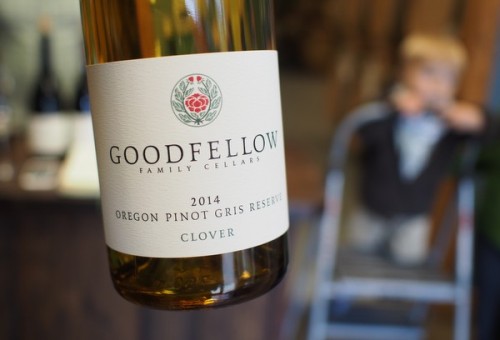
They also source from the Durant vineyard in the Dundee Hills, first planted in 1973. The soils here, which are volcanic (known as Jory), are quite different to Whisling Ridge. Goodfellow get some of the 1973 Pommard clone Pinot, plus also some Dijon clones plated in 1993. He’s also started sourcing from the Johann vineyard.
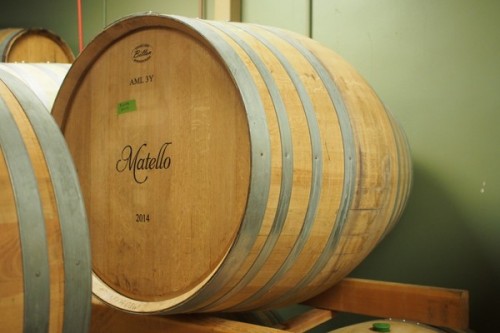
For elevage, Marcus is turning more to larger oak, rather than focusing on just 225/228 litre barriques. ‘Shifting into 500 litres makes a difference,’ he says, ‘but shifting to the 820 litre barrels makes a huge difference.’ This is especially apparent with his Chardonnays, where the later volume and reduced oxygen exposure makes it easier to get a nice mineral reduction on the wines.
Marcus is also stirring the yeast during fermentation. ‘We talk a lot about wine chemistry,’ he says, ‘but we should be talking more about wine physics.’ During fermentation the yeasts release CO2 and this rises upwards. They get sent downwards and form a compact layer at the bottom of the fermentation vessel. So he likes to stir this yeast layer to prevent a horizon being formed. This creates a lot of yeast bodies and in the Pinot Noir this can lead to yeast bleach of colour. But it does help with fermentation dynamics. What Marcus finds is that the colour then returns to the wine after some time in bottle. He also posited that one of the benefits of limestone soils is that it allows growers to produce cellars with rounded ceilings, which then recirculate the heat from the fermentation and allow the wines to get a bit drier.
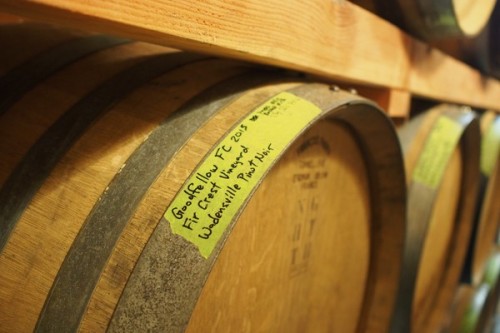
The wines are lovely. Particular highlights are the Clover Pinot Gris Reserve 2014, which is textured, spicy and detailed after elevage in large format acacia barrels. Chardonnay is a strongpoint for Goodfellow, and I loved the 2014 Durant Chardonnay with its lovely noble reduction and detailed, precise palate. This is serious. The 2014 Richard’s Cuvée from the Whistling Ridge vineyard is also pretty serious, and outperforms the Durant in the 2013 vintage.
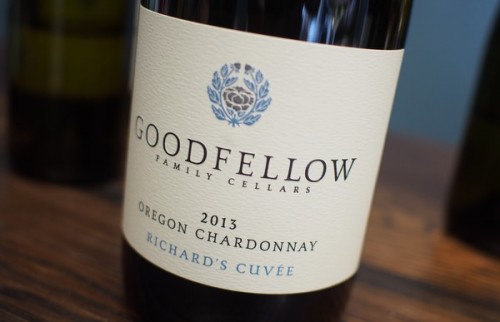
I very much like the Pinots here, too. I find a preference for Whistling Ridge over Durant, and a cask sample of the 2014 of the former was compelling. The 2013 is grippy and firm, and needs some time. I’m also a fan of the Matello Fools’ Journey 2012, which is a Syrah with 10% Viognier co-ferment, made 100% whole cluster. This is an elegant, expressive Syrah in a Burgundian style.
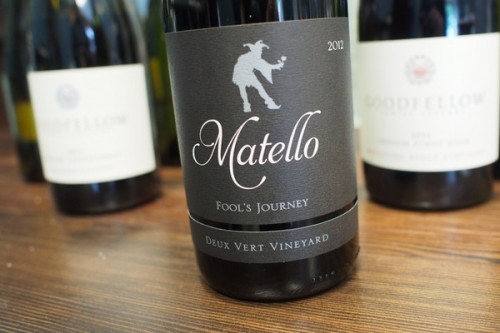
Find these wines with wine-searcher.com
Leave a Comment on In Oregon: Goodfellow Family Cellars